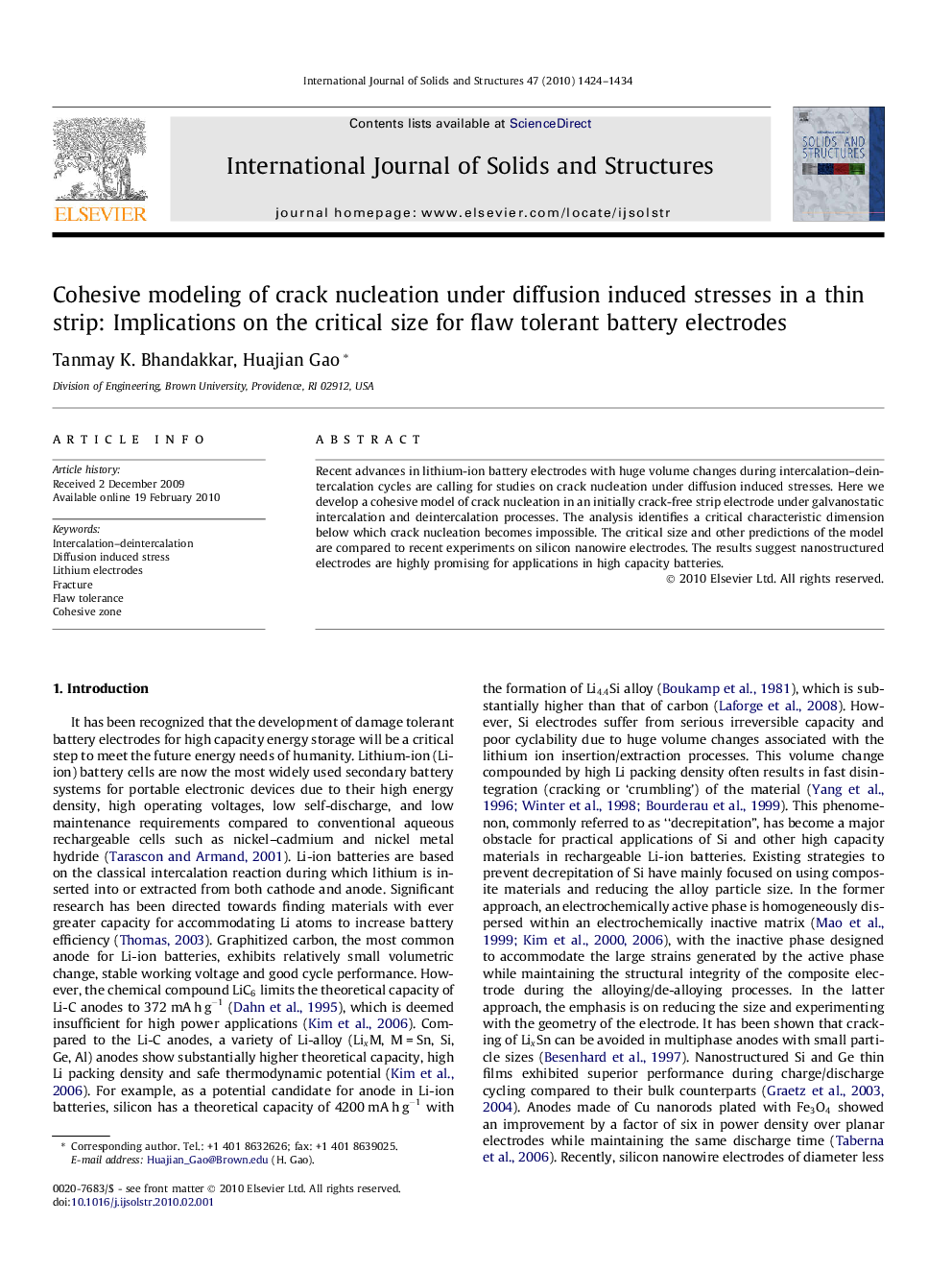| Article ID | Journal | Published Year | Pages | File Type |
|---|---|---|---|---|
| 279226 | International Journal of Solids and Structures | 2010 | 11 Pages |
Abstract
Recent advances in lithium-ion battery electrodes with huge volume changes during intercalation–deintercalation cycles are calling for studies on crack nucleation under diffusion induced stresses. Here we develop a cohesive model of crack nucleation in an initially crack-free strip electrode under galvanostatic intercalation and deintercalation processes. The analysis identifies a critical characteristic dimension below which crack nucleation becomes impossible. The critical size and other predictions of the model are compared to recent experiments on silicon nanowire electrodes. The results suggest nanostructured electrodes are highly promising for applications in high capacity batteries.
Related Topics
Physical Sciences and Engineering
Engineering
Civil and Structural Engineering
Authors
Tanmay K. Bhandakkar, Huajian Gao,
